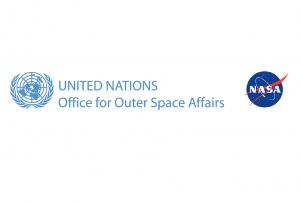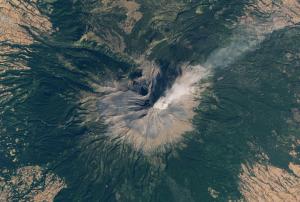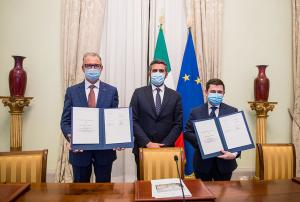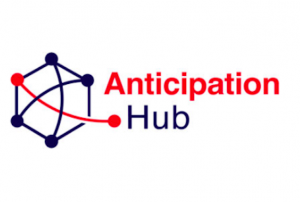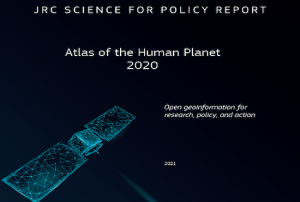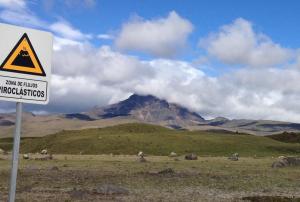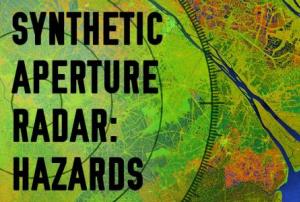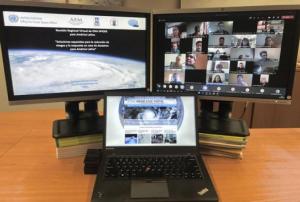Volcanic Eruption
Definition
Facts and figures
Further information
UN-SPIDER Regional Support Offices with hazard-specific expertise
Related content on the Knowledge Portal
The United Nations Office for Outer Space Affairs (UNOOSA) and the National Aeronautics and Space Administration of the United States Government (NASA) signed a landmark Memorandum of Understanding (MoU) on 17 December 2020 pledging cooperation in areas of science and technology to support the peaceful uses of outer space.
The MoU brings together NASA's wealth of open-source spacecraft data, tools, and expertise and UNOOSA's unique position as the only UN entity dedicated to outer space affairs, to expand global opportunities to leverage the benefits of space. The partners will design capacity-building programmes, particularly for institutions in countries that do not yet have or that are developing space capabilities, to help them access space.
Together, UNOOSA and NASA will develop ways to leverage the Artemis programme as part of UNOOSA's Access to Space 4 All Initiative, which offers opportunities for international researchers and institutions, especially in…
read more11/01/2021Recently, two volcanoes in the Caribbean indicated increased activity: Mount Pelée on Martinique and the La Soufrière volcano on Saint Vincent and the Grenadines. Mount Pelée has been experiencing seismic activity and the La Soufrière volcano has been releasing gas. In light of this increased activity and the risk that a potential volcanic eruption poses to the environment and human life, a programme at the National Aeronautics and Space Administration (NASA) was activated earlier this year to monitor the region.
A volcanic eruption can have a highly destructive impact on the environment and human life. For this reason, satellite-based radar instruments can be used to monitor volcanic activity and support disaster management efforts. Following an increased activity manifested by these two volcanoes in the Caribbean, the Earth Applied Sciences Disasters programme at NASA is actively monitoring the region and analysing Earth observation (EO) data to monitor this volcanic…
read more10/03/2021The European Commission plans to rapidly expand its environmental monitoring programme Copernicus. For this purpose, the European Space Agency (ESA) recently pledged 2.55 billion Euros towards contracts to advance the production of six new Copernicus satellite missions. The final of the six contracts was signed last Thursday between ESA and Thales Alenia Space for a mission that will provide new and important information to climate research and disaster management.
The high-priority Copernicus Radar Observation System for Europe in L-band (ROSE-L) mission is planned to launch in 2028 for a period of 7.5 years. The ROSE-L mission will orbit Earth every few days at an altitude of 690km and will carry a L-Band synthetic aperture radar (SAR). With a wavelength of approximately 23cm, an…
read more18/12/2020The Disasters programme unit at the National Aeronautics and Space Administration (NASA) recently joined a newly launched online platform aimed at placing anticipatory action on the humanitarian agenda. NASA’s involvement in the Anticipation Hub and the subsequent incorporation of Earth observation (EO) tools, serves to improve the capabilities of anticipatory action globally and demonstrates the potential of utilizing satellite-driven data for anticipatory action in disaster management.
Anticipatory action in the humanitarian context describes disaster mitigation activities based on in-depth forecast information and risk analysis. This approach has gained traction amongst the humanitarian community in recent years as it is viewed as a more efficient and affordable alternative…
read more02/02/2021A new report outlines the impact of Global Human Settlement Layer (GHSL) data on various policy areas. The 2020 edition of the “Atlas of the Human Planet”, recently published and launched virtually by the Joint Research Centre (JRC) of the European Commission as a deliverable to the Group on Earth Observations (GEO) Human Planet Initiative, explores the impact of GHSL data on various policy areas, including disaster risk management.
GHSL data refers to “global spatial information, evidence-based analytics and knowledge describing the human presence on the planet”. This data relies on spatial information from Landsat 8, Sentinel-1 and Sentinel-2. It is mainly cost-free and…
read more18/02/2021The European Space Agency (ESA) wants to further develop the understanding of our planet. For this purpose, ESA chose three concepts in 2018 to compete for the next Earth Explorer mission. The decision was made last week to move on to the next development stage with Harmony, one of the three concepts. Harmony would provide new and important information on the Earth’s systems for scientific research and disaster risk management.
The objective of Earth Explorer missions is to “focus on the atmosphere, biosphere, hydrosphere, cryosphere and Earth's interior with an overall emphasis on learning more about the interactions between these systems and the impact that human…
read more05/03/2021- Publishing institution:
The use of multi-risk information systems is crucial in confronting the increasing risks posed by natural hazards. In some cases, risk is increasing due to inadequate land-use norms or regulations that allow for the construction of infrastructure in areas exposed to such natural hazards. In other cases, vulnerability increases due to lack of awareness or extreme poverty. The need to address risks from the point of view of multiple hazards is necessary to contribute to sustainable development and has been incorporated as an essential element of the Sendai Framework for Disaster Risk Reduction 2015-2030. For this purpose, the RIESGOS 2.0 project was launched in March 2021. Under the coordination of the German Aerospace Center (DLR), the project builds on the accomplishments of its predecessor - RIESGOS - as a multi-risk information system that models and simulates natural…
read more17/03/2021The University of Alaska Fairbanks has launched a MOOC about Synthetic Aperture Radar (SAR) remote sensing for disaster monitoring. SAR is a remote sensing technology that can see the ground even during darkness and through rain, clouds, or smoke. Participants of the course will gain an intuitive understanding of the information contained in SAR observations and learn to use a range of analysis techniques to apply SAR data to disaster mapping and management. Specific topics will include:
- The mathematical and physical principles of SAR remote sensing
- How to access and visualize SAR data
- Interpretation of SAR images in the context of disaster monitoring
- Interferometric SAR (InSAR) concepts
- Flood mapping and SAR change detection for hazard analysis
- InSAR-based analysis of volcanoes and landslides
The learned concepts will be put into practice in simulated disaster response exercises, in which participants will analyze SAR…
read moreIn order to discuss and promote the use of space technologies in addressing natural hazards such as forest fires and landslides in Latin America, UN-SPIDER conducted a virtual regional expert meeting on the topic of “Space-based Solutions for Disaster Risk Reduction and Emergency Response in Latin America” from 22 to 24 September 2020. The meeting was jointly organized with UN-SPIDER Regional Support Offices from Argentina (National Space Activities Commission, CONAE), Brazil (Federal University of Santa Maria, UFSM), Colombia (Geographic Institute Agustin Condazzi, IGAC), and Mexico (Mexican Space Agency, AEM).
In Latin America, UN-SPIDER and its Regional Support Offices have regularly carried out regional expert meetings, training courses and other joint efforts since 2011. The last Regional Expert Meeting took place in 2017 in Mexico.
The meeting, which consisted of three two-hour-long sessions, brought together a total of over 200 disaster management stakeholders…
read more28/09/2020

